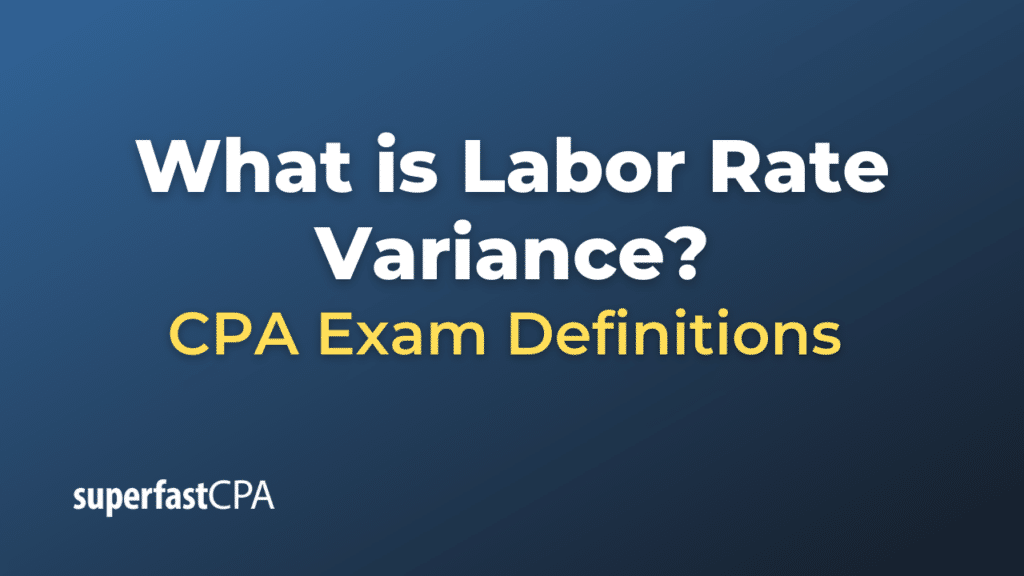Labor Rate Variance
Labor rate variance is a term used in managerial and cost accounting that measures the difference between the actual hourly labor rate paid and the standard or expected hourly labor rate. It’s used to understand if a company is paying more or less for labor than what it had planned or budgeted.
It is usually calculated using the following formula:
Labor Rate Variance = (Standard Hourly Rate – Actual Hourly Rate) x Actual Hours Worked
If the actual hourly rate is greater than the standard rate, then the variance is unfavorable because the company is paying more for labor than expected. If the actual hourly rate is less than the standard rate, then the variance is favorable because the company is paying less for labor than expected.
As with all variances, while a favorable variance might be seen as a good thing (paying less for labor), it could also potentially indicate issues such as underpaid workers leading to low morale or high turnover. Similarly, an unfavorable variance might point to areas where cost controls could be improved, but could also be a result of necessary wage increases or overtime pay to meet production demands.
Together with the labor efficiency variance, the labor rate variance helps provide a more complete picture of labor cost control and can help managers make informed decisions about staffing, scheduling, wage negotiation, and more.
Example of Labor Rate Variance
Let’s consider a hypothetical example to illustrate labor rate variance:
Suppose ABC Manufacturing, from the previous example, expected to pay their workers an average hourly wage of $20 (the standard rate) to produce widgets.
However, due to a shortage of skilled workers in the market, they had to pay an average of $22 per hour (the actual rate) to attract and retain the necessary staff.
Now, let’s recall that it actually took them 2,100 hours to produce the 1,000 widgets (as we discussed in the previous example).
We can calculate the labor rate variance as follows:
Labor Rate Variance = (Standard Hourly Rate – Actual Hourly Rate) x Actual Hours Worked Labor Rate Variance = ($20/hour – $22/hour) x 2,100 hours Labor Rate Variance = -$2/hour x 2,100 hours = -$4,200
So, the labor rate variance is -$4,200, which is an unfavorable variance. This indicates that ABC Manufacturing spent $4,200 more than planned on labor costs because they had to pay their workers $2 more per hour than they had budgeted for.
This result might prompt the company’s management to reassess their labor budget, consider the market conditions when setting their standard labor rates, or explore ways to improve worker productivity to offset the higher wage costs.













